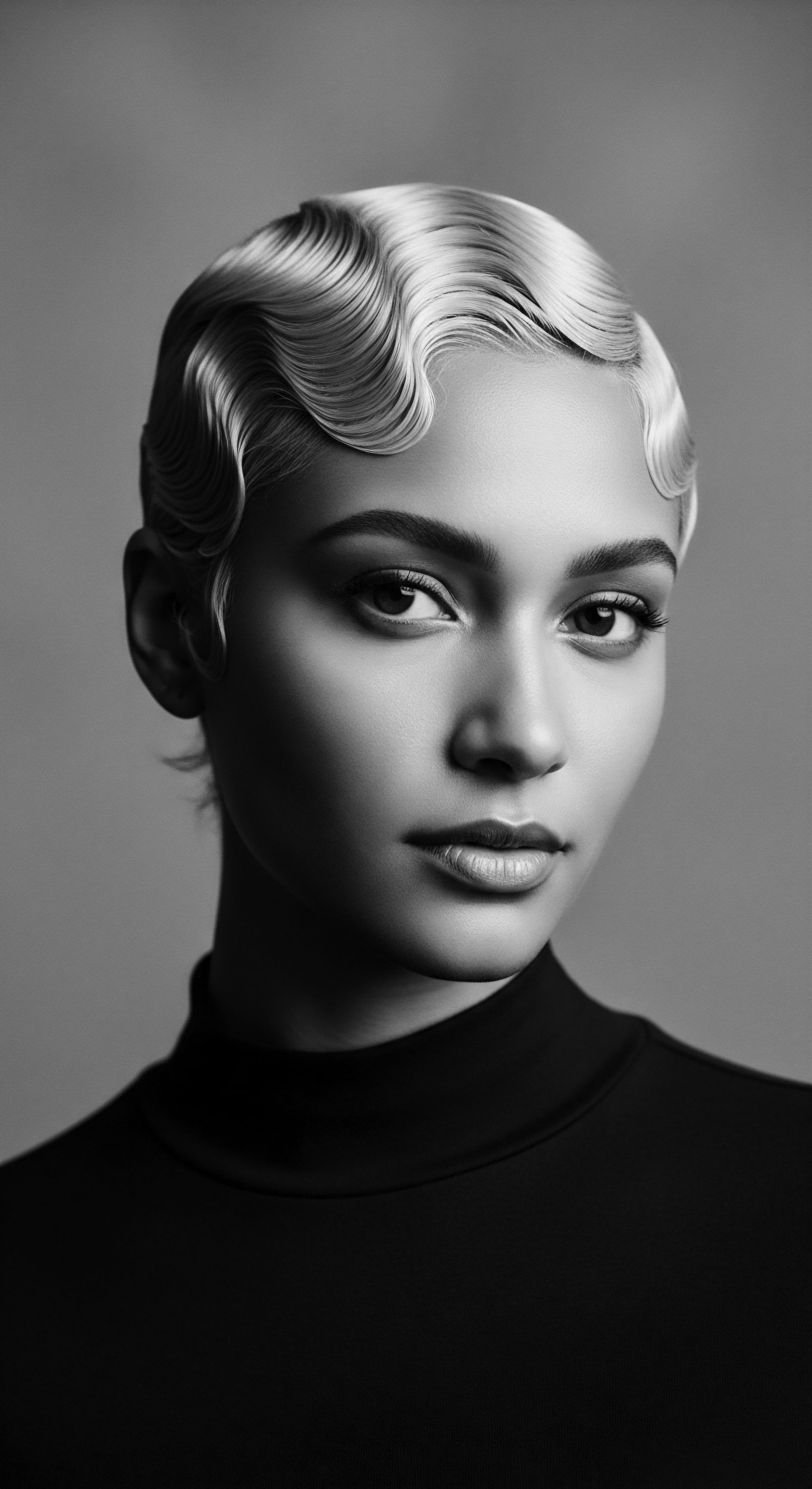
Fundamentals
The very concept of ‘Textured Hair Definition’ begins not merely with the visual coils and curls that adorn a head, but with a deeper understanding, an unfolding of its inherent nature, rooted in the very biological blueprint of human expression. At its core, the Textured Hair Definition serves as a precise explanation of hair strands characterized by their distinctive patterns, which range from waves to tight coils, departing from the straight form. This delineation recognizes the unique structural attributes of these hair types, which are intrinsically linked to their growth patterns from the follicle and the distribution of keratin within the strand. It’s an interpretation that moves beyond simple appearance, venturing into the microscopic world where the true identity of textured hair resides.
Consider, if you will, the follicle itself—the tender seedbed from which each strand emerges. For those with straight hair, the follicle is typically round, allowing the hair to grow in a uniform, cylindrical fashion. Yet, for textured hair, the follicle assumes an oval or elliptical shape, creating a bend in the hair shaft as it grows. This morphological distinction is a foundational element in the clarification of textured hair.
This subtle curvature, repeated along the length of the strand, gives rise to the characteristic waves, curls, or coils. Furthermore, the distribution of keratin, the protein that forms hair, is not entirely uniform in textured strands; it tends to cluster more densely on the inner curve of the hair shaft, contributing to its spring and elasticity. This specification of its biological makeup is crucial for any meaningful understanding of textured hair.
The fundamental understanding of Textured Hair Definition begins at the elliptical follicle, shaping each strand’s unique and historically significant pattern.
This biological explanation is, however, merely the scientific preamble to a much richer, culturally resonant designation. For centuries, across diverse ancestral traditions, the hair’s very conformation held profound significance. The way hair behaved, its ability to coil and hold intricate styles, was not simply a physical characteristic; it was a living text, speaking volumes about one’s lineage, social standing, and spiritual connection. The delineation of textured hair, therefore, also involves understanding its ancestral roots.
Whether recognizing a warrior’s braids, a maiden’s intricate cornrows signifying rites of passage, or the sacred locs worn by spiritual leaders, the textured hair definition has always encompassed a communal and symbolic import. This heritage-informed description grounds the scientific explanation in a living history.
For those encountering this concept for the first time, it is vital to grasp that this isn’t just about hair. It’s about a legacy. The meaning of textured hair extends to the very identity of Black and mixed-race communities, for whom hair has frequently served as a powerful symbol of resistance, beauty, and continuity in the face of systemic adversity. The communal understanding of textured hair, therefore, is an elucidation woven into the very fabric of identity.
The early experiences of many with textured hair often involved a struggle against its natural inclinations, a push towards conformity with Eurocentric beauty standards. However, a reawakening has allowed many to reclaim and redefine the essence of their hair, recognizing the inherent beauty in its coils and curves. This reinterpretation speaks to an ancestral memory, a remembrance of the hair’s true dignity.
Ultimately, the ‘Textured Hair Definition,’ particularly for new learners, acts as a gateway to appreciating a vast spectrum of hair types often misunderstood or marginalized. It offers a framework for recognizing the unique needs and glorious versatility of wavy, curly, and coily strands, inviting a journey of discovery that begins with respect for its natural state and its profound historical journey. The very statement of its unique properties opens doors to new forms of care and appreciation.
- Follicle Shape ❉ The defining biological aspect for textured hair, where the follicle is typically oval or elliptical, creating a curved growth pattern. This is a foundational aspect of its physical specification.
- Keratin Distribution ❉ An uneven distribution of keratin within the hair shaft, denser on the inner curve, contributes to the coil pattern and elasticity. This helps to further elucidate its unique properties.
- Growth Pattern ❉ The hair strands emerge from the scalp in a non-linear fashion, forming spirals, S-shapes, or Z-shapes, which are core to its visual and tactile designation.
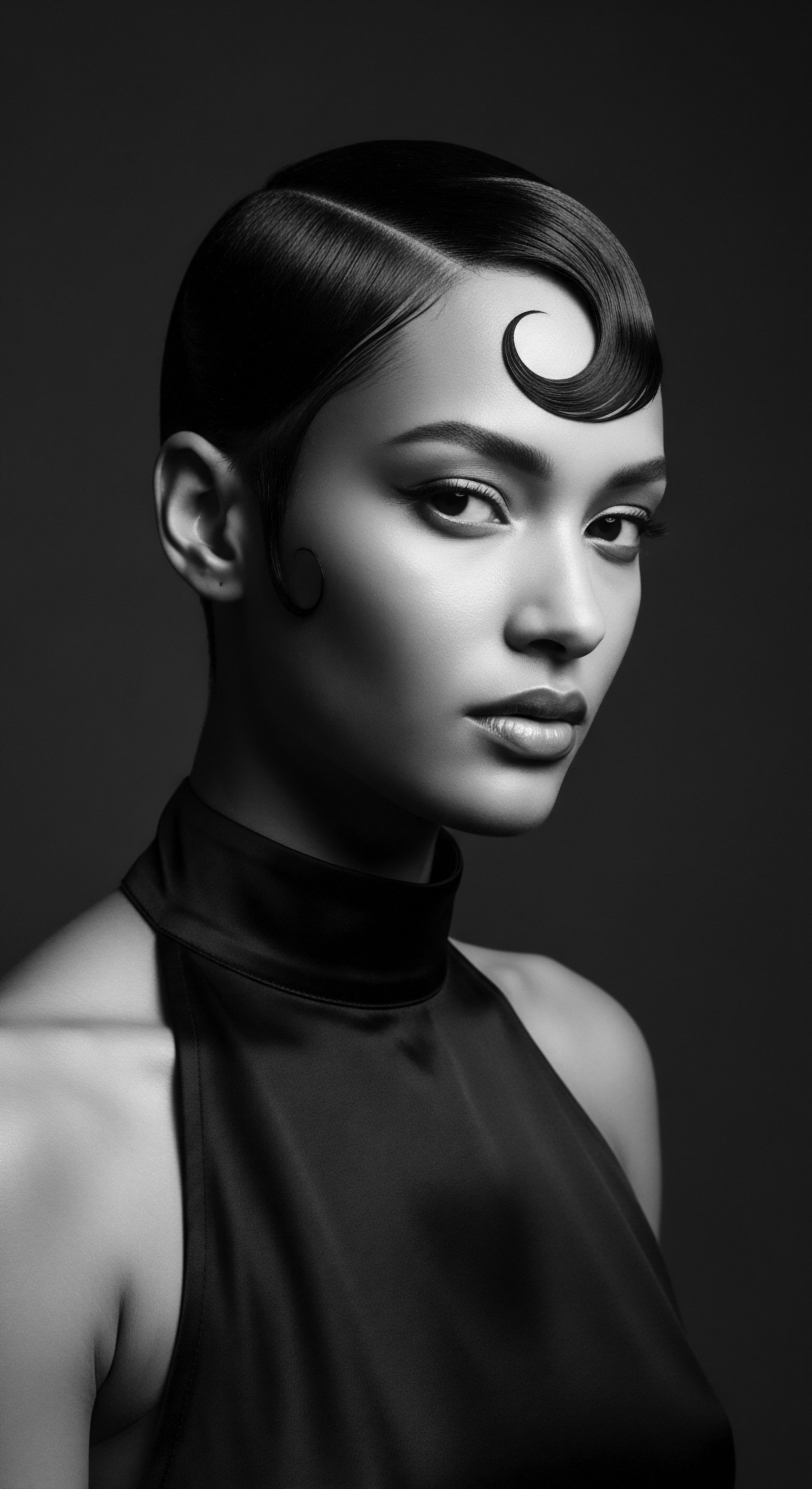
Intermediate
Building upon the foundational understanding of the biological and surface-level characteristics, the intermediate meaning of ‘Textured Hair Definition’ delves deeper into the intricate continuum of patterns, the science of elasticity, and the profound historical implications for Black and mixed-race individuals. This delineation is not a rigid classification but rather a fluid spectrum, encompassing hair that forms waves, curls, and coils, each with its unique temperament and requirements. This level of specification allows for a more nuanced appreciation of its forms. It acknowledges that textured hair, in its diverse expressions, shares a common ancestral lineage of resilience and beauty.
At this stage, the explanation of textured hair moves beyond the simple observation of its shape to consider its density, porosity, and elasticity—elements critical to its comprehensive care and cultural significance. The tighter the coil, for instance, the more challenging it can be for the scalp’s natural oils (sebum) to travel down the hair shaft, often leading to increased dryness. This calls for a thoughtful reinterpretation of traditional hair care practices, adapting them to modern understanding.
Hair density, or the number of strands per square inch, also impacts how hair behaves, as does porosity, which describes the hair’s ability to absorb and retain moisture. These characteristics, interwoven with the fundamental coil pattern, contribute to the precise designation of each hair type.
Beyond basic forms, intermediate understanding of Textured Hair Definition embraces the dynamic interplay of density, porosity, and elasticity, revealing the historical wisdom embedded in its care.
Historically, the meaning of textured hair has been shaped by complex social landscapes. During periods of enslavement and colonialism, efforts to strip individuals of their cultural identity often began with attempts to suppress or alter their hair. Straightening hair became a survival mechanism, a forced assimilation. Yet, even within these oppressive contexts, ancestral practices persisted—clandestine braiding, the ingenious use of natural emollients like shea butter or coconut oil, and the communal sharing of knowledge about hair care (Afro-Latina scholars, 2022).
These acts of care, deeply rooted in ancestral wisdom, were often acts of resistance. The enduring legacy of these practices offers a powerful clarification of how hair maintained its significance. The Textured Hair Definition, in this light, becomes a testament to enduring cultural identity, a defiant preservation of self through generations.
Consider the profound intention behind communal hair care rituals in many African societies. Before colonization distorted these practices, the act of styling hair was often a significant social event, a bonding experience passed from elder to youth, a time for storytelling and transmission of cultural values. The intricacy of styles could signify marital status, age, or tribal affiliation. This historical context provides an essential interpretative lens through which to view the textured hair definition.
For example, the Fulani Braids, originating with the Fulani people of the Sahel region, are often adorned with beads and cowrie shells, symbols of wealth and social standing. The very act of creating these braids, often taking hours, reinforced familial ties and community bonds. This specific historical example underscores the deep communal and ceremonial significance of textured hair.
| Historical Era (Ancestral Roots) Pre-Colonial African Societies |
| Traditional Care Practices and Significance Communal grooming rituals, use of natural ingredients (shea butter, oils), intricate styling as markers of status, spirituality, identity. Hair was a sacred connection to the divine and ancestors. |
| Modern Understanding and Reaffirmation Science validates the nourishing properties of traditional ingredients. The cultural meaning of hair is reaffirmed as a symbol of identity, self-love, and ancestral pride. |
| Historical Era (Ancestral Roots) Slavery and Post-Emancipation |
| Traditional Care Practices and Significance Forced concealment/alteration of natural texture. Survival strategies included wrapping, simple braiding, ingenious use of limited resources. Hair became a site of both oppression and quiet resistance. |
| Modern Understanding and Reaffirmation Increased historical scholarship on resistance through hair. Recognition of the psychological impact of forced assimilation and the reclaiming of natural texture as a revolutionary act. |
| Historical Era (Ancestral Roots) Early 20th Century (Post-Civil War Era) |
| Traditional Care Practices and Significance Emergence of hair straightening tools and chemicals (e.g. hot combs, lye relaxers) driven by Eurocentric beauty ideals and economic opportunities. A period of complex negotiation with natural texture. |
| Modern Understanding and Reaffirmation Understanding the chemical processes involved in straightening and the damage caused. The rise of informed product development focused on nourishing natural textures. |
| Historical Era (Ancestral Roots) Black Power Movement (1960s-1970s) |
| Traditional Care Practices and Significance The 'Afro' as a powerful political statement and symbol of Black pride, reclaiming natural texture and challenging dominant beauty standards. |
| Modern Understanding and Reaffirmation The historical precedent for hair as political expression. Continued advocacy for natural hair acceptance in all spaces. |
| Historical Era (Ancestral Roots) The journey of understanding Textured Hair Definition is a continuous dialogue between ancestral wisdom and contemporary knowledge, affirming a legacy of profound cultural resilience. |
This intermediate stage of understanding also demands recognition of hair typing systems—like the Andre Walker system (1A-4C)—which, while sometimes criticized for oversimplification, initially provided a vocabulary for discussing the vast array of textured hair. While it is important not to let such systems rigidly define one’s hair, they offer a useful starting point for identifying specific curl patterns and understanding general care needs. This designation allowed for the beginning of targeted care. Ultimately, the intermediate meaning of ‘Textured Hair Definition’ invites a deeper, more empathetic engagement with the hair itself, appreciating its past and nurturing its future.
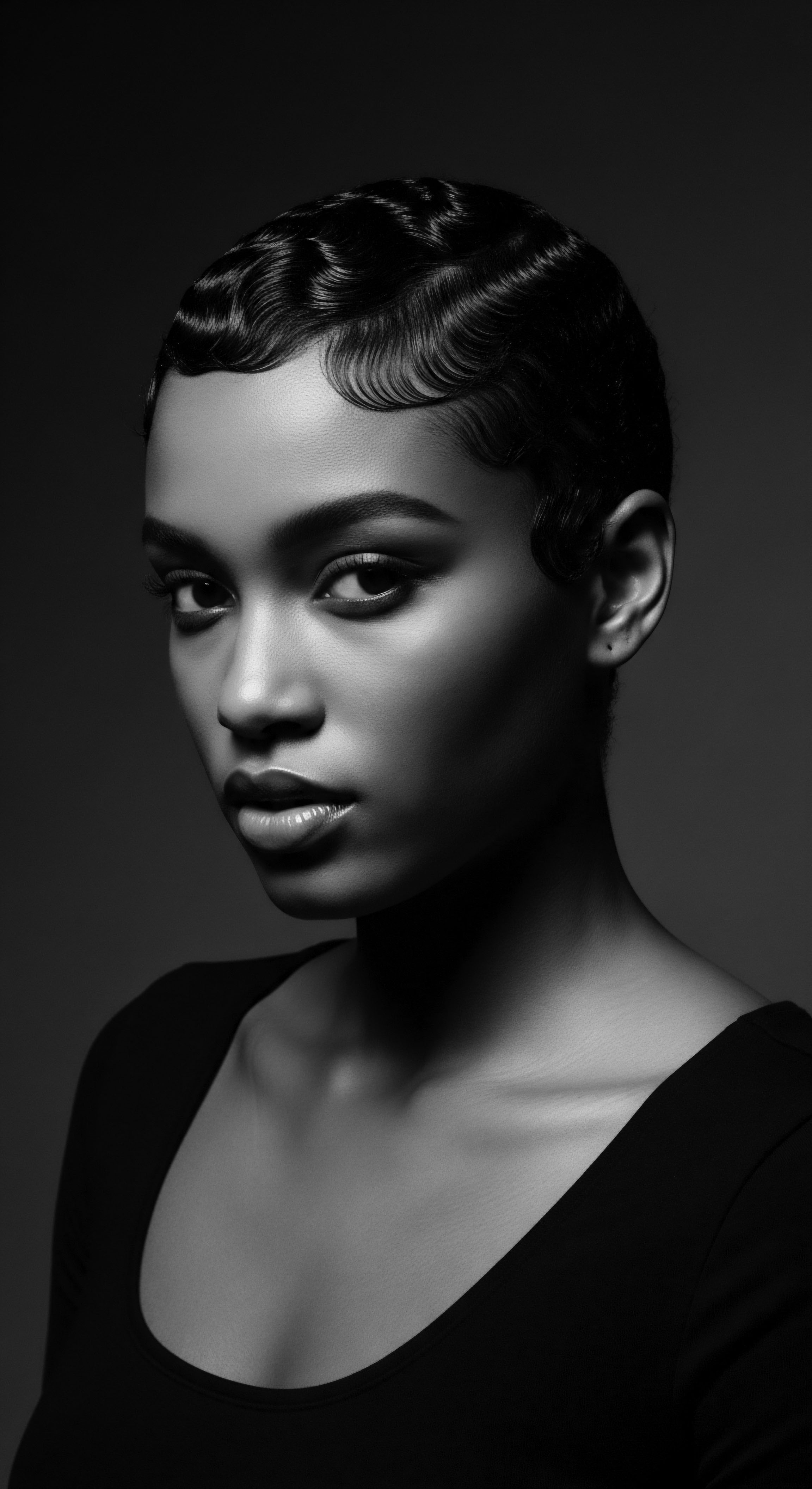
Academic
The academic understanding of ‘Textured Hair Definition’ transcends superficial classification, demanding a rigorous, interdisciplinary approach that integrates biophysical morphology, socio-cultural semiotics, and historical dialectics to delineate its profound significance. This advanced elucidation posits that textured hair—encompassing the full spectrum of wavy, curly, and coily forms—is not merely a genetic variation; it is a complex biological entity whose structural peculiarities have been imbued with layers of cultural meaning and historical contestation. The definition, therefore, extends into a deep examination of its material and immaterial realities.
From a biophysical standpoint, the inherent curvature of textured hair stems from the asymmetry of the hair follicle and the differential rates of keratinization along the hair shaft. As argued by researchers (e.g. Loussouarn & Price, 2007), the elliptical cross-section of the follicle, coupled with the uneven distribution of ortho- and para-cortical cells within the hair fiber, dictates the helical coiling. This precise specification of its micro-anatomy provides a scientific basis for its unique properties.
The tighter the coil, the more points of contact the hair strand has with neighboring strands, leading to increased friction and potential for tangling, alongside a diminished flow of natural oils from the scalp to the ends. This morphological reality necessitates a specialized approach to care, often echoing practices rooted in ancestral wisdom. The elasticity and tensile strength of textured hair, often greater when wet, are also subjects of ongoing scientific inquiry, revealing adaptations that allowed for diverse styling in historical contexts. This rigorous explication of its biological makeup is critical to a full understanding.
The academic exploration of Textured Hair Definition unearths a symphony of biophysical intricacies and socio-cultural narratives, revealing how helical forms became powerful historical texts.
Academically, the meaning of textured hair is inextricably linked to the concept of Afro-Diasporic Aesthetics and the politics of appearance. Hair, in this context, has served as a primary site for the negotiation of identity, resistance, and self-determination for Black communities globally. The historical subjugation of textured hair, exemplified by the ‘good hair’ versus ‘bad hair’ dichotomy, reflects systemic racism and colorism, deeply embedded within colonial and post-colonial societies. The process of hair straightening, for instance, can be analyzed as a materialized form of assimilation, often self-imposed, driven by economic necessity and social pressure.
Dr. Patricia Hill Collins (1990) extensively discusses how hair, as a symbol, reflects the intersectional oppressions faced by Black women. Her work illuminates how Black women’s hair experiences are not isolated incidents but rather microcosms of broader societal power dynamics. Her analysis offers a critical lens through which to understand the profound implications of the Textured Hair Definition within historical power structures. The enduring legacy of these dynamics means that the interpretation of textured hair is still often seen through a lens of societal expectation and historical trauma.
A particularly illuminating case study can be found in the Dreadlocks Rulings in various legal systems, which provide tangible evidence of the institutional struggle against natural hair. In 2016, the U.S. 11th Circuit Court of Appeals ruled against the Equal Employment Opportunity Commission (EEOC) in a case involving Catastrophe Management Solutions, a company that rescinded a job offer because a Black woman refused to cut her dreadlocks. The court stated that the company’s ban on dreadlocks was not discriminatory because dreadlocks are a ‘mutable characteristic’ and not an ‘immutable characteristic’ like skin color or race.
This legal interpretation highlights a profound academic and social tension ❉ the legal system’s failure to recognize a culturally significant hairstyle, which is an expression of ancestral heritage and racial identity, as inherently connected to race. The ruling underscores the ongoing systemic misunderstanding of the textured hair definition as a culturally, historically, and biologically significant marker of identity, reducing it to a mere ‘choice’ rather than an expression of heritage. This incident provides a powerful illustration of the continuing struggle for the full recognition and acceptance of textured hair in public and professional spheres.
- Biophysical Morphology ❉ Examination of the elliptical follicle and uneven keratin distribution as primary determinants of coil pattern. This forms the scientific basis for its material explication.
- Socio-Cultural Semiotics ❉ Analysis of hair as a symbolic language, conveying messages about identity, resistance, and historical power dynamics within Afro-diasporic communities. This addresses the cultural implications of its statement.
- Psychosocial Impact ❉ Investigating the effects of societal perceptions of textured hair on self-esteem, mental health, and lived experiences of individuals, particularly within contexts of marginalization. This explores the human intention behind care and acceptance.
- Ancestral Praxis Validation ❉ Academic studies often validate traditional hair care methods, demonstrating the efficacy of natural ingredients and techniques passed down through generations. This provides a scientific basis for ancient practices.
Furthermore, the academic discourse considers the role of material culture in shaping the textured hair definition. Traditional tools, such as wooden combs from ancient Egypt or intricately carved picks used in various African cultures, were not simply utilitarian objects. They were extensions of ancestral knowledge, designed to navigate the unique properties of coiled strands without breakage. These artifacts represent the deep, practical understanding held by early hair care practitioners.
The study of these tools, alongside ethnographic accounts of their use, provides critical insights into the ancestral care rituals and the holistic understanding of textured hair within its historical context. This provides a practical and tangible specification of its meaning.
The academic investigation also probes the burgeoning field of Trichology as it pertains to textured hair. Modern research explores the specific molecular composition of keratin in different curl patterns, the biomechanics of hair breakage, and the efficacy of various ingredients on coiled hair. This scientific rigor often affirms the wisdom inherent in centuries-old practices, for instance, the emphasis on deep conditioning and protective styling, which modern science now explains as vital for maintaining moisture and minimizing mechanical stress on fragile coil patterns.
This convergence of ancient wisdom and contemporary science offers a comprehensive understanding of the textured hair definition. It bridges the gap between historical practices and modern scientific validation, offering a fuller clarification.
Ultimately, the academic meaning of ‘Textured Hair Definition’ is a dynamic, evolving construct, constantly re-evaluated through the lens of new scientific discoveries, ongoing social justice movements, and a deeper appreciation for the rich tapestry of human diversity. It calls for an acknowledgment of textured hair as a profound biological marvel, a vibrant cultural artifact, and an enduring symbol of ancestral strength and beauty. This rigorous delineation encourages us to perceive textured hair not as a deviation from a norm, but as a magnificent expression of human genetic diversity, worthy of reverence and scholarly pursuit. Its delineation is never complete; it is a living concept.
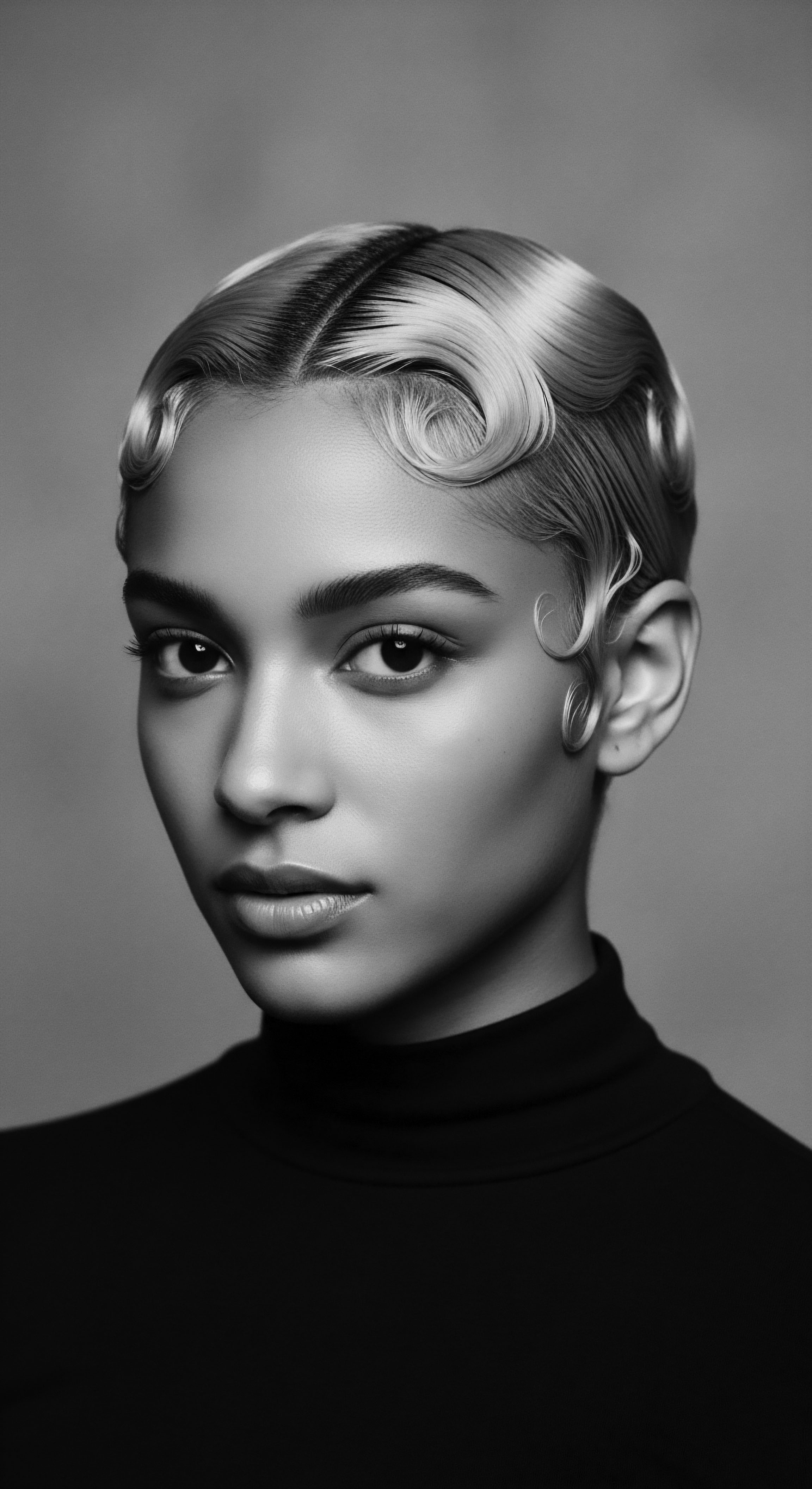
Reflection on the Heritage of Textured Hair Definition
To dwell upon the ‘Textured Hair Definition’ is to embark upon a contemplative journey through time, a gentle descent into the deep wells of ancestral memory that inform its very existence. It is a reflection not merely on the biological contours of a strand, but on the enduring spirit that has shaped its meaning across generations, transforming it into a powerful symbol of identity, resilience, and profound beauty within Black and mixed-race communities. This designation is a living archive, breathing with the stories of those who carried its essence through trials and triumphs.
Our understanding of textured hair is a testament to the unyielding spirit of its bearers. From the dawn of civilization, hair was more than adornment; it was a cosmic antenna, a connection to the spiritual realm, a declaration of belonging. The meaning of textured hair, therefore, cannot be separated from the hands that meticulously braided it into intricate patterns, often under moonlight, sharing whispers of wisdom and tales of survival.
These acts of care were ancestral practices, a silent language spoken through touch, nourishing both the hair and the soul. The legacy of these practices shapes its contemporary interpretation.
Reflecting on Textured Hair Definition is an intimate journey into ancestral memory, acknowledging how each coil carries tales of resilience, identity, and a beauty shaped by generations.
The resilience inherent in textured hair mirrors the resilience of the people who wear it. Despite centuries of concerted efforts to erase its beauty, to diminish its significance through societal pressures and chemical alterations, textured hair has consistently reasserted its glorious presence. This resurgence is not a fleeting trend; it is an echo of deep ancestral pride, a reclaiming of a fundamental aspect of self.
The current embrace of natural texture is a powerful manifestation of this inherited strength, a declaration of self-acceptance that reverberates with the courage of those who came before. This profound intention behind its care is a continuation of ancient wisdom.
The journey of understanding the textured hair definition is deeply personal, yet universally shared within the diaspora. Each individual’s hair journey is a unique narrative, yet it is intricately woven into a larger collective story of heritage and discovery. As we learn to understand the specific needs of our coils, our waves, our curls, we are not simply engaging in modern self-care; we are participating in an ancient dialogue, honoring the wisdom passed down through generations. This deep connection to the past is the true essence of its significance.
Ultimately, the ‘Textured Hair Definition’ invites a posture of reverence—for the science that explains its form, for the history that has shaped its perception, and most deeply, for the ancestral knowledge that has guided its care and celebration. It is a call to recognize that within each coil resides a profound connection to the past, a vibrant expression of the present, and an unbound promise for the future. This recognition fosters a deeper, more holistic understanding.
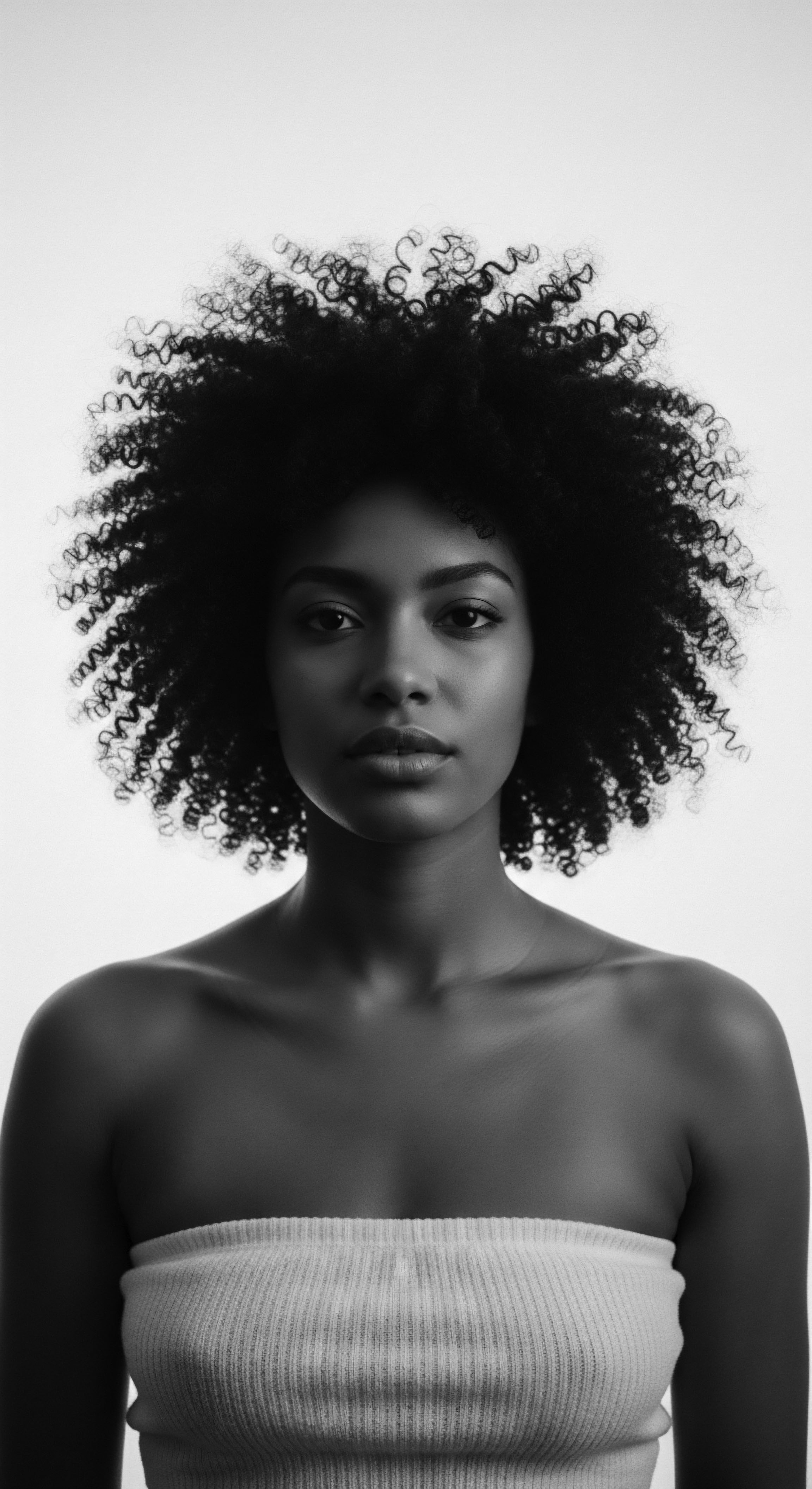
References
- Collins, P. H. (1990). Black Feminist Thought ❉ Knowledge, Consciousness, and the Politics of Empowerment. Routledge.
- Afro-Latina scholars. (2022). Pelo malo and the politics of hair ❉ A qualitative study of Afro-Latina women’s perceptions of hair discrimination and identity. In Hair, Race, and Identity ❉ Critical Essays (pp. 71-89). Lexington Books.
- Loussouarn, G. & Price, D. (2007). African Hair ❉ A Scientific and Cultural Approach. Springer.
- Byrd, A. D. & Tharps, L. L. (2001). Hair Story ❉ Untangling the Roots of Black Hair in America. St. Martin’s Griffin.
- Mercer, K. (1994). Welcome to the Jungle ❉ New Positions in Black Cultural Studies. Routledge.
- Akbar, N. (1996). Breaking the Chains of Psychological Slavery. Mind Productions & Associates.
- hooks, b. (1992). Black Looks ❉ Race and Representation. South End Press.
- Ogbechie, S. O. & Okeke-Agulu, C. (2018). Hair in African Art and Culture. Museum for African Art.
